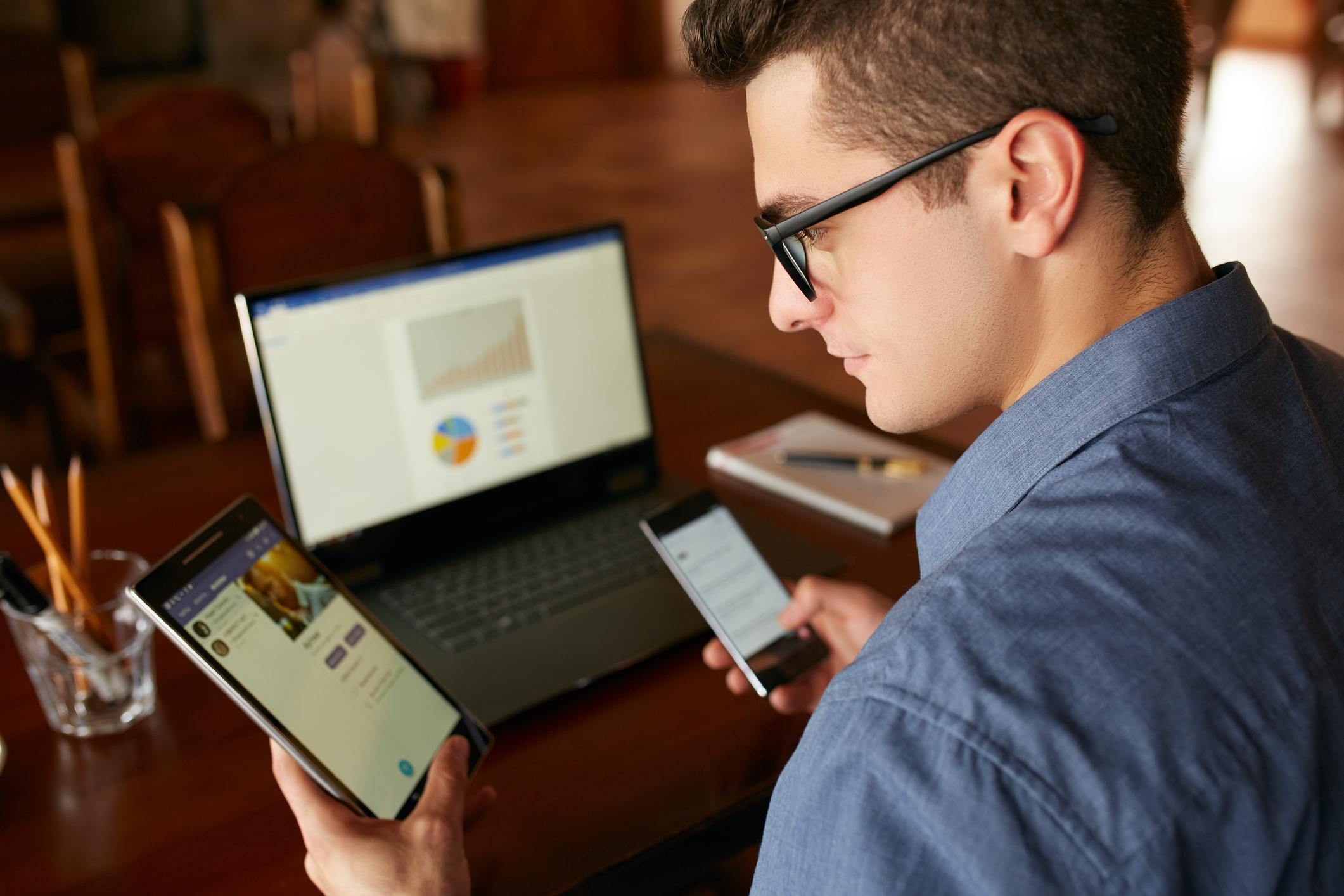
By David Holler, OD, FAAO, FSLS
Today, patients are spending more time than ever on digital devices.1 And whether they are logging in extra hours pressed close to their phones, tablets, or computers, many patients are subsequently developing symptoms related to their screentime habits.
At my practice, I see this scenario playing out frequently as patients become more reliant on digital devices for work, school, and leisure. The good news is that we have innovative treatments to help alleviate their symptoms.
Here are the top five communication strategies that I use to educate patients on how digital devices can impact their eyes and the unique treatments that can help.
1. Start the Conversation
In today’s always on culture, patients may experience eye tiredness and dryness. They may also believe their prescription has changed and express frustration that they don’t see as clearly at the end of the day. In these cases, I will ask, “How is your vision at the start of your day?” Additionally, I make a point to talk to every patient about their digital device use habits. I ask about their symptoms, and what solutions they may have tried in the past.
Since nearly 60% of patients have never talked to an eye care professional about how digital device use affects their eyes, it’s important that practices incorporate the digital device use discussion into every routine eye or contact lens exam.2
2. Inform Patients: They are Contact Lens Candidates
Patients are often familiar with the 20-20-20 rule or blue light glasses, but it’s up to the eye care professional to let patients know that they are candidates for contact lenses.
Many patients are also unaware of the many different types of contact lens options that are available, including MyDay Energys® and Biofinity Energys® that may help with eye tiredness and dryness associated with digital device use.3 For patients already wearing a spherical lens, it’s important to remember that most are also candidates for MyDay Energys® and Biofinity Energys®.†4,5
3. Recommend Solutions to Help Reduce Symptoms
Early in the exam, I also explain that blink rates generally change during screentime use.6 Specifically, I share that blink rates typically reduce from 12-14 blinks per minute, on average, to about 4-6 blinks per minute while a patient is on a screen.7,8 In my experience, most patients are surprised to hear this.
I then emphasize that the patient could benefit from a contact lens that will help maintain its hydration to help compensate for the reduced blink rate that occurs while they are using digital devices.
4. Explain Contact Lens Technology in Easy to Understand, Impactful Terms
Once the link between symptoms and screen time is established, I explain that MyDay Energys® and Biofinity Energys® are unique since their material technology and lens design may help address dryness and eye tiredness.3 I point this out to patients, along with the following:
- Since blink rates change during digital device use,6 Aquaform® Technology, found in both MyDay Energys® and Biofinity Energys®, helps the lens retain its water content, which also helps maintain optical quality and helps decrease dryness.3
To address eye tiredness,3 DigitalBoost™ Technology, also found in MyDay Energys® and Biofinity Energys®, may help ease stress from overworked eye muscles during digital device use.*9 When you stare at something up close and use muscles to retain focus, those muscles can develop lactic acid and become sore and tired. Anything we can do to reduce that is a win.
5. Inform Patients: Addressing Digital Eye Strain is a Priority for Your Practice
Most patients are interested in upgrading their technology. Beyond the latest phone, computer or watch upgrade, I find this also to be true with contact lens technology.
Talk to every patient about their digital device use habits. Prescribe innovative treatments, which can go a long way in helping your patients and your practice.
Watch this video that contains more conversation starters about digital eye strain and discover more about MyDay Energys® and Biofinity Energys® for your patients.
David Holler, OD, FAAO, FSLS, is President of Clarity Vision of Apex in Apex, N.C. He is a graduate of North Carolina State University with degrees in Biochemistry and Chemistry and earned his Doctor of Optometry from the Pennsylvania College of Optometry. Dr. Holler has vast experience with macular degeneration, glaucoma disorders, pediatric care, and refractive surgery co-management and has received awards for his passion for specialty contact lenses. Due to his commitment to keratoconus and specialty contact lenses, Dr. Holler was honored to be inducted as a Fellow of the Scleral Lens Education Society in 2022.






